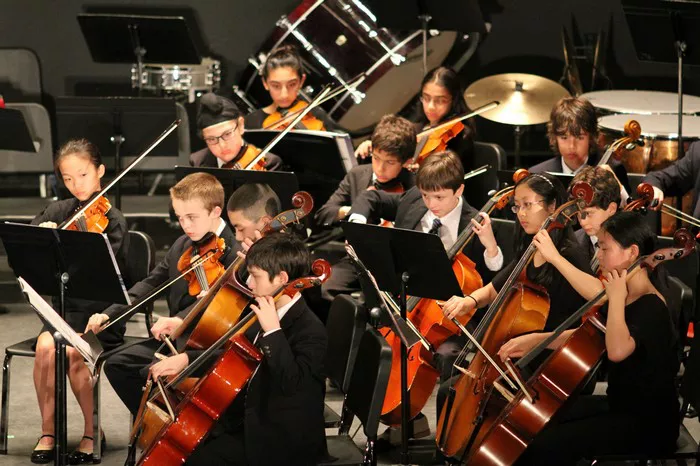Soft classical music, often referred to as “music for relaxation” or “music for studying,” holds a unique place in the realm of classical compositions. It offers listeners a tranquil escape, a sanctuary of calm amidst the bustling cacophony of daily life. In this comprehensive exploration, we delve into the nuances, benefits, and diverse repertoire of soft classical music, understanding its impact on emotions, cognition, and well-being.
Understanding Soft Classical Music
Soft classical music is characterized by its gentle melodies, soothing rhythms, and serene tonalities. Unlike the grandeur and intensity of symphonies or operas, soft classical pieces prioritize subtlety, elegance, and emotional depth. Composers often employ slower tempos, delicate instrumentation, and harmonic progressions that evoke tranquility and introspection.
One of the defining features of soft classical music is its ability to create an ambient backdrop that enhances focus and relaxation. Whether it’s background music for work, meditation, or simply unwinding after a long day, these compositions have a calming effect on the mind and body.
The Therapeutic Effects of Soft Classical Music
Research has extensively documented the therapeutic benefits of listening to soft classical music. It has been shown to reduce stress, anxiety, and even alleviate symptoms of depression. The gentle melodies and harmonic structure can evoke feelings of nostalgia, comfort, and serenity, providing a welcome respite from the demands of modern life.
Moreover, soft classical music has a profound impact on cognitive function. Studies suggest that listening to Mozart, Bach, or Debussy can improve focus, enhance creativity, and boost productivity. The intricate yet soothing patterns in these compositions engage the brain in a way that promotes mental clarity and emotional well-being.
Repertoire and Composers
Soft classical music encompasses a vast repertoire spanning different eras and styles. From Baroque gems like Bach’s “Air on the G String” to Romantic masterpieces such as Chopin’s “Nocturnes,” each composer brings a unique voice and aesthetic to the genre.
Johann Sebastian Bach, often regarded as the master of counterpoint, crafted intricate yet serene compositions that continue to captivate audiences centuries later. Pieces like “Suite No. 3 in D Major” showcase Bach’s ability to weave melodic lines seamlessly, creating a tapestry of sound that is both profound and soothing.
Frederic Chopin, on the other hand, epitomizes the Romantic era’s emphasis on emotion and lyricism. His nocturnes, including the famous “Nocturne in E-flat Major,” exude a sense of introspection and melancholic beauty. Chopin’s delicate touch and expressive phrasing make his works a cornerstone of soft classical music.
Moving forward in time, composers like Claude Debussy ushered in impressionistic sounds that blurred the lines between music and visual art. Pieces like “Clair de Lune” transport listeners to dreamy landscapes, evoking moonlit nights and poetic reverie. Debussy’s use of harmonic color and evocative melodies adds a layer of sophistication to the genre.
Modern composers have also contributed significantly to the soft classical music scene. Artists like Ludovico Einaudi, Yiruma, and Max Richter blend classical techniques with contemporary sensibilities, creating ambient soundscapes that resonate with a global audience. Einaudi’s “Nuvole Bianche,” for instance, has become a modern classic, beloved for its simplicity and emotional depth.
The Role of Soft Classical Music in Various Settings
Soft classical music finds its place in a variety of settings, each harnessing its therapeutic potential in unique ways:
Studying and Concentration: Many students and professionals turn to soft classical music to enhance concentration and productivity. The calming effect of these compositions helps create an optimal environment for focused work and learning.
Yoga and Meditation: In mindfulness practices like yoga and meditation, music plays a crucial role in setting the mood and facilitating relaxation. Soft classical pieces with their gentle rhythms and harmonies can deepen the meditative experience.
Spa and Wellness Centers: Wellness establishments often incorporate soft classical music into their ambiance to create a tranquil atmosphere for relaxation, massage therapy, and other wellness treatments.
Sleep and Insomnia Relief: For individuals struggling with insomnia or seeking better sleep quality, listening to soft classical music before bedtime can promote relaxation and induce a restful state conducive to sleep.
Background Music in Public Spaces: Restaurants, cafes, and retail stores often play soft classical music in the background to create a welcoming and sophisticated atmosphere for customers.
The Evolution of Soft Classical Music in the Digital Age
The advent of digital platforms and streaming services has revolutionized the way people access and experience soft classical music. Platforms like Spotify, Apple Music, and YouTube offer vast libraries of classical recordings, making it easier than ever for listeners to explore new composers and compositions.
Additionally, the rise of ambient music and electronic interpretations of classical pieces has expanded the genre’s reach. Artists like Ólafur Arnalds and Nils Frahm blend classical instruments with modern electronic elements, creating hybrid sounds that resonate with contemporary audiences while retaining the essence of soft classical music.
The Future of Soft Classical Music
As we look ahead, soft classical music continues to evolve and adapt to changing tastes and technologies. Collaborations between classical musicians and electronic producers, innovative concert experiences, and interdisciplinary projects that merge music with other art forms are shaping the future landscape of this timeless genre.
Furthermore, ongoing research into the therapeutic effects of music on mental health and well-being is shedding light on new applications and interventions. From music therapy programs in healthcare settings to personalized playlists for mood management, soft classical music holds promise as a powerful tool for enhancing quality of life.
Conclusion
In conclusion, soft classical music transcends its historical roots to offer a timeless refuge of beauty and tranquility. Whether as a source of inspiration, relaxation, or introspection, these gentle compositions continue to resonate with audiences worldwide, enriching lives and soothing souls in a harmonious embrace of sound and emotion.

